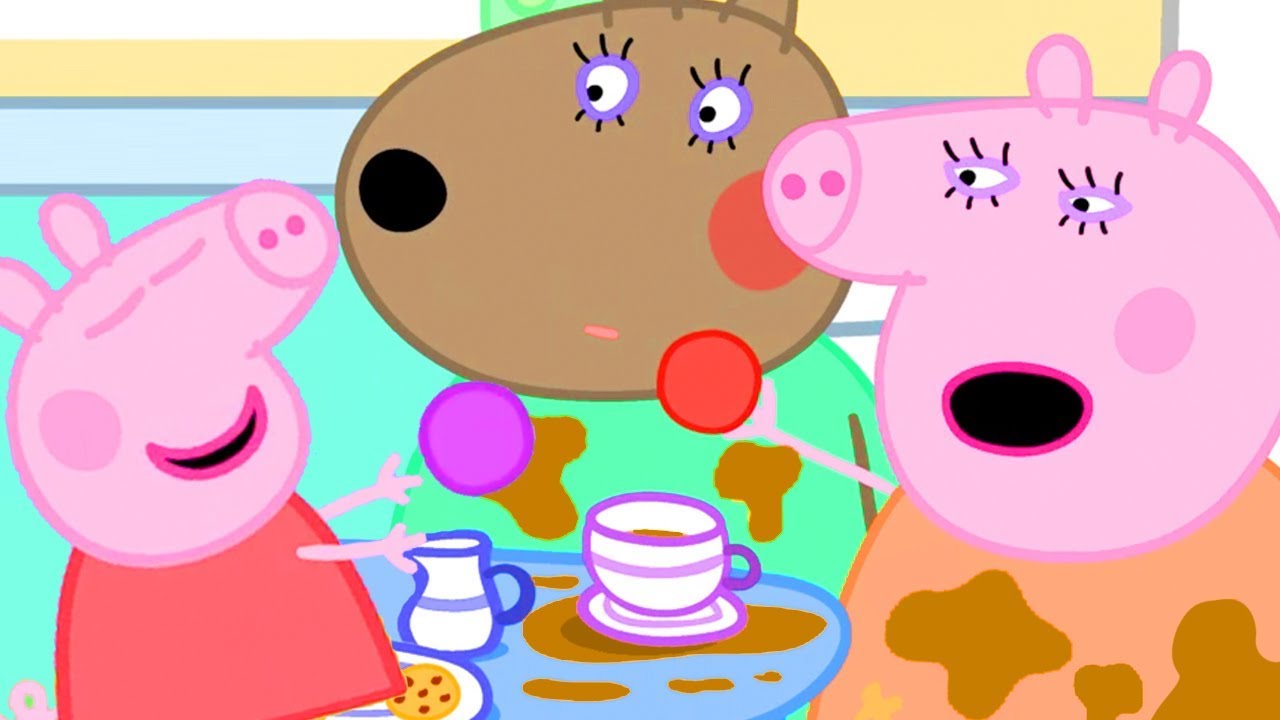Love Monster And The Development Of Empathy In Children

Table of Contents
Love Monster's Journey as a Metaphor for Emotional Understanding
Love Monster's journey perfectly mirrors the emotional challenges many children face. His initial struggles with understanding and expressing his own emotions provide a relatable framework for young readers. Love Monster’s experiences offer a safe space for children to explore their own feelings without judgment.
- Love Monster's initial isolation and fear: He's scared and alone, unsure how to connect with others. This resonates with children who may feel shy, anxious, or excluded.
- His gradual understanding of different emotions: As he interacts with other monsters, Love Monster begins to recognize and differentiate between various feelings like happiness, sadness, anger, and fear. This gradual process mirrors a child's own emotional development.
- His learning curve to express emotions appropriately: Love Monster learns that it’s okay to express his emotions, but also that there are healthy and unhealthy ways to do so. This is a crucial lesson for children learning emotional regulation.
- The role of friendship and connection in emotional growth: Love Monster's friendships are key to his emotional growth. This highlights the importance of social connections in developing empathy and understanding.
Identifying and Naming Emotions with Love Monster
Love Monster visually and narratively introduces a range of emotions, making it an excellent tool for emotional literacy. The vibrant illustrations and simple text make it easy for young children to grasp complex feelings.
- Examples of emotions depicted: The book vividly portrays sadness (when Love Monster is alone), happiness (when he makes friends), anger (when things don't go his way), and fear (in his initial encounters).
- How the illustrations help children visualize these emotions: The expressive illustrations of Love Monster and the other characters help children connect visual cues with emotional states. This visual learning is particularly effective for younger children.
- Activities to help children identify and name their emotions: After reading, ask your child to point out how Love Monster’s face or body language reflects his emotions. You can also use puppets or drawings to help them express and label their own feelings. Use phrases like, “Love Monster looks sad because…” to encourage emotional vocabulary.
Empathy in Action: Learning to Understand Others' Perspectives
The story beautifully demonstrates empathy through Love Monster's interactions with other monsters. His journey is one of learning to see things from another's perspective.
- Love Monster's initial misunderstanding of the other monsters' needs: Initially, Love Monster focuses solely on his own needs and struggles to understand the feelings of others.
- His gradual learning to consider others' feelings: Through observation and interaction, he learns to recognize and respond to the emotions of his fellow monsters.
- The importance of listening and understanding different viewpoints: Love Monster learns the value of active listening and understanding diverse perspectives, a cornerstone of empathy.
- The positive outcome of empathetic behavior: His empathetic actions lead to positive relationships and a sense of belonging, demonstrating the rewards of considering others' feelings.
Practical Applications: Using Love Monster to Foster Empathy at Home
Love Monster isn't just a bedtime story; it's a springboard for discussions and activities that foster empathy.
- Reading the book aloud and engaging in discussions: Ask open-ended questions like, "How did Love Monster feel when...?" or "What would you do if you were in Love Monster's shoes?"
- Role-playing scenarios from the book: Act out scenes from the book to help children understand the characters' emotions and perspectives.
- Connecting the story to real-life situations: Relate the book's themes to everyday situations your child encounters, helping them apply empathy in their own lives.
- Creating art projects inspired by the book's themes: Draw pictures of Love Monster expressing different emotions, or create a collaborative art project that explores feelings.
- Developing empathy through games and play: Engage in pretend play that involves understanding and responding to the emotions of other characters.
Love Monster and Emotional Intelligence: Building a Strong Foundation
Love Monster contributes significantly to the development of emotional intelligence (EQ) in children. EQ is crucial for social and emotional well-being.
- Importance of EQ for children's social and emotional development: EQ helps children navigate social situations, build relationships, and manage their emotions effectively.
- How Love Monster helps children develop self-awareness: By identifying and naming his own emotions, Love Monster models self-awareness, a key component of EQ.
- How Love Monster teaches children to manage their own emotions: The story shows how Love Monster learns to regulate his emotions in healthy ways.
- How Love Monster encourages children to build positive relationships: The book emphasizes the importance of kindness, understanding, and connection in forming healthy relationships.
Conclusion: Cultivating Empathy with Love Monster
Love Monster effectively teaches children about empathy and emotional intelligence through a relatable and engaging narrative. The book's simple yet profound message highlights the importance of understanding and responding to the emotions of others. Empathy is a crucial skill for children's social, emotional, and cognitive development, fostering compassion, kindness, and strong relationships.
Bring the heartwarming lessons of Love Monster into your home and help your child develop crucial empathy skills. Start reading today and watch your child blossom with emotional understanding! Use Love Monster activities to create a nurturing environment where emotional intelligence flourishes. Explore the world of Love Monster and unlock your child's potential for empathy.

Featured Posts
-
 Revealed The Meaning Of Peppa Pigs New Baby Sisters Name
May 21, 2025
Revealed The Meaning Of Peppa Pigs New Baby Sisters Name
May 21, 2025 -
 Expect Mild Temperatures And Little Rain This Week
May 21, 2025
Expect Mild Temperatures And Little Rain This Week
May 21, 2025 -
 Kolme Muutosta Huuhkajien Avauskokoonpanossa Benjamin Kaellman Poissa
May 21, 2025
Kolme Muutosta Huuhkajien Avauskokoonpanossa Benjamin Kaellman Poissa
May 21, 2025 -
 Trumps Trade Policies And Gretzkys Canadian Patriotism A Heated Discussion
May 21, 2025
Trumps Trade Policies And Gretzkys Canadian Patriotism A Heated Discussion
May 21, 2025 -
 Former Tory Councillors Wife Fails In Racial Hatred Appeal
May 21, 2025
Former Tory Councillors Wife Fails In Racial Hatred Appeal
May 21, 2025
